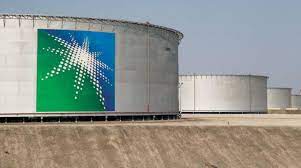Last month, the UAE declared it will not join Saudi Arabia in making voluntary oil production cuts, claiming that the cuts by the Saudis are enough to balance the markets. This is hardly surprising considering that the UAE has long argued that it should be allowed to pump more than its current OPEC quota. But OPEC’s third largest producer was not content to just maintain its current production. The UAE got a huge concession from OPEC in the form of an upward revision of its quota that will take its production up by 200,000 barrels per day (bpd) in 2024 to 3.2 million barrels.
But the UAE does not have to wait till 2024 to reap the rewards of its shrewdness. Oil prices have climbed about 15% since Saudi Arabia started its voluntary cuts of 1 million barrels per day. In effect, Saudi Arabia is doing all the heavy lifting but the UAE is profiting the most.
The UAE has plans to ramp up its crude production capacity to five million barrels per day (bpd) by 2027, well above OPEC’s quota of 3 mb/d.
“Saudi Arabia is cutting massively. At least Russia says it’s cutting. The UAE has cut to the bare minimum. The end result is that Saudi Arabia is doing all the work and the UAE has oil prices 15 percent higher than they were a month ago. By any means, the UAE is the big winner this summer,” Viktor Katona, the head of crude analysis at Kpler, has told Middle East Eye.
The situation is even more ironic when you consider that the UAE is much richer than Saudi Arabia on a per capita basis, meaning Saudi is more worried about short-term prices that could take a toll on government spending. At the current production rate, Saudi Arabia needs $100-a-barrel crude to balance its books.
Deeper Saudi Cuts?
The UAE might see its revenues shoot up once more if Saudi Arabia decides to make even deeper production cuts as it tries to goose oil prices.
Last month, several commodity experts predicted the Saudis will prolong its voluntary production cut but taper off their extra cut by restoring 250,000-500,000 barrels a day of halted production in September. A week later, Saudi Press Agency (SPA) published confirmation that the country will indeed extend its 1 million barrels per day (mb/d) oil output cut into September, but with an important nuance that was largely missed by much of the media coverage that the cut “can be extended or extended and deepened”. This marks the first time Saudi Arabia has signaled a willingness to make even deeper cuts if the previous ones are taking too long to achieve the desired effect.
Weakening demand by major oil consumers might also persuade Saudi Arabia to cut even further. The latest data coming from China shows that crude oil imports fell 2.412mb/d m/m to a sixth-month low of 10.429mb/d as stockpiling wanes. It’s not clear if this is the beginning of a downtrend since June’s imports were the second highest on record as inventory building hit a torrid clip. To be fair, the y/y increase in crude oil imports in July was a hefty 1.519mb/d, 17% higher than the volume a year ago.
Meanwhile, India’s oil demand for the month of July clocked in at 4.70mb/d, weaker than Wall Street’s expectations of 4.83mb/d. The country’s pace of y/y demand growth slowed from 190 thousand barrels per day (kb/d) in June to 84kb/d in July. The data here again is mixed because gasoline demand growth increased to 6.3% in July from 6.2% in June while diesel demand growth increased to 3.9% from 3.1%.
But deeper Saudi cuts are not a given.
Commodity analysts at Standard Chartered have wagered that Saudi Arabia will not deepen its cuts because crude inventories are likely to fall sharply going forward. Most energy experts have predicted that global oil markets will gradually tighten, which should boost prices as the months and quarters roll on. The International Energy Agency(IEA) in Paris has predicted an oil shortage of about 1.7 million barrels a day during the second half of the year.
Commodity experts at Standard Chartered have predicted that global oil markets will register a supply deficit of 2.81 million barrels per day in August; 2.43mb/d in September and more than 2mb/d in November and December. The analysts have also projected that global inventories will fall by 310mb by end-2023 and another 94mb in the first quarter of 2024 thus pushing oil prices higher. According to StanChart, Brent prices will climb to $93/bbl in the fourth quarter.

 Iran Energy News Oil, Gas, Petrochemical and Energy Field Specialized Channel
Iran Energy News Oil, Gas, Petrochemical and Energy Field Specialized Channel



